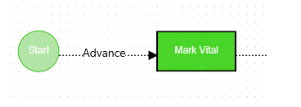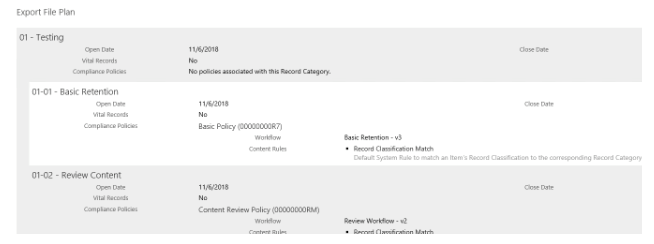Benefits of Collabware CLM 4.0+
For SharePoint on-premises implementations, we usually recommend using Collabware CLM as a records management tool. Not only does it offer comprehensive record management capabilities such as retention policies, visual retention workflows, and a full disposition process, it also automates record classification, allowing users to design intuitive business solutions in SharePoint, while utilizing content rules to drive classification.
We’ve been using the latest version of Collabware CLM for a while, and here are the top features we’re excited about:
1. Record Managers can edit immutable records’ metadata
Prior to the 4.0 release, once an item is marked as immutable, it no longer can be edited or deleted, and that includes the metadata about the item. To update the metadata of an item, such as changing its department after an organization restructure, a record manager reverses the immutable state, makes the edits, and re-applies the immutable status. This is not only a difficult and time-consuming process, but it also inadvertently opens the item itself to editing and deletion when only metadata needs to be changed.
Now with 4.0+ releases, as long as the Access Control Levels (ACL) associated to the record category has “Manage Classified Content” security checked, users in the at ACL will be able to edit immutable items. We call that a win!
2. Vital Records review
I’ve been asked many times by our clients about why is there a checkbox for Vital Records and what can it do?
Prior to Collabware CLM 4.0, other than marking a record category as vital, there wasn’t much you could do with it. With this new feature, there is finally a review process that leverages this piece of metadata and schedules routine reviews of the items!
For record categories that are deemed vital and require review, first make sure to check the “Vital Records” box in the edit Record Category screen. Then you are able to configure the frequency in which vital records classified to this record category will be reviewed.
With a Collabware retention workflow for the record category, you can mark items as vital either advancing through a content rule or an event trigger to separate vital content from non-vital.
Finally, you are able to view all the record categories that are marked as vital in the new “Vital Records” area, located in the Compliance section under the File Plan tab.
3. Export content and search results metadata
This feature is a game changer! You can now search and export content out of SharePoint and move them into a different storage solution.
To export content, you either do it from your new personal Search Page, or as part of your disposition process in your Collabware workflow with two new workflow actions.
With your personal Collabware search page, accessed through “Lifecycle Management” by clicking your name in the top right corner of the page, you use queries to find all the content you wish to export. You then choose to export content or export metadata and download the resulted content from the new “Content Exports” area.
Alternatively, you can use the two new workflow actions, “Accession” and “Transfer.” This is useful after a review process to give approval for the record manager to export the content, along with the choice to delete the exported content from SharePoint.
4. View classified content and export file plan details
Something that’s been missing prior to Collabware CLM 4.0 is the ability to view all the items associated to a record category in an easy and intuitive way. Now with the “View Content” button built in, you can easily find all items classified to a record category, and with the help of a simple query, you can also view all the metadata that is meaningful to you!
Furthermore, you can now easily export the file plan into a PDF format with its metadata through the new “File Plan Metadata” button on the File Plan ribbon.
Are you excited about these new features and want to learn more? Or are you thinking about a records management solution for your SharePoint implementation? Contact us and let us help you! Gravity Union is a Vancouver based company, and we can help you with your records management implementation anywhere in North America.







